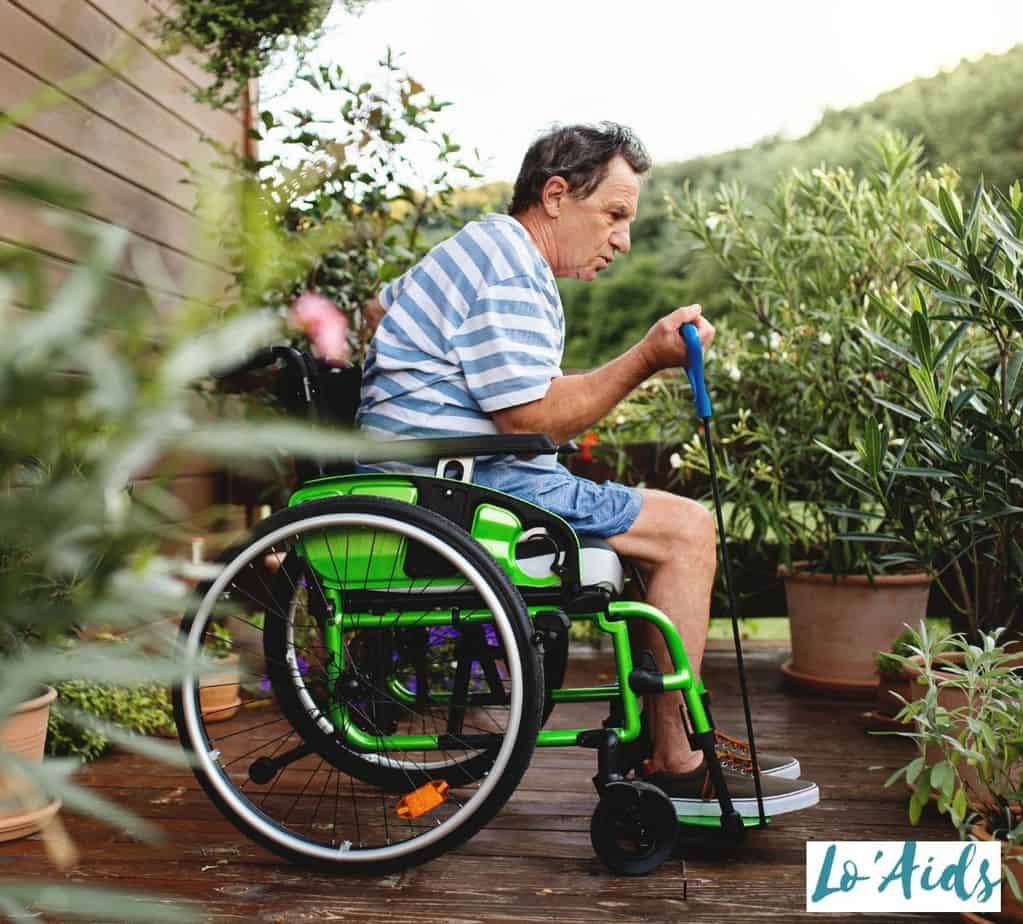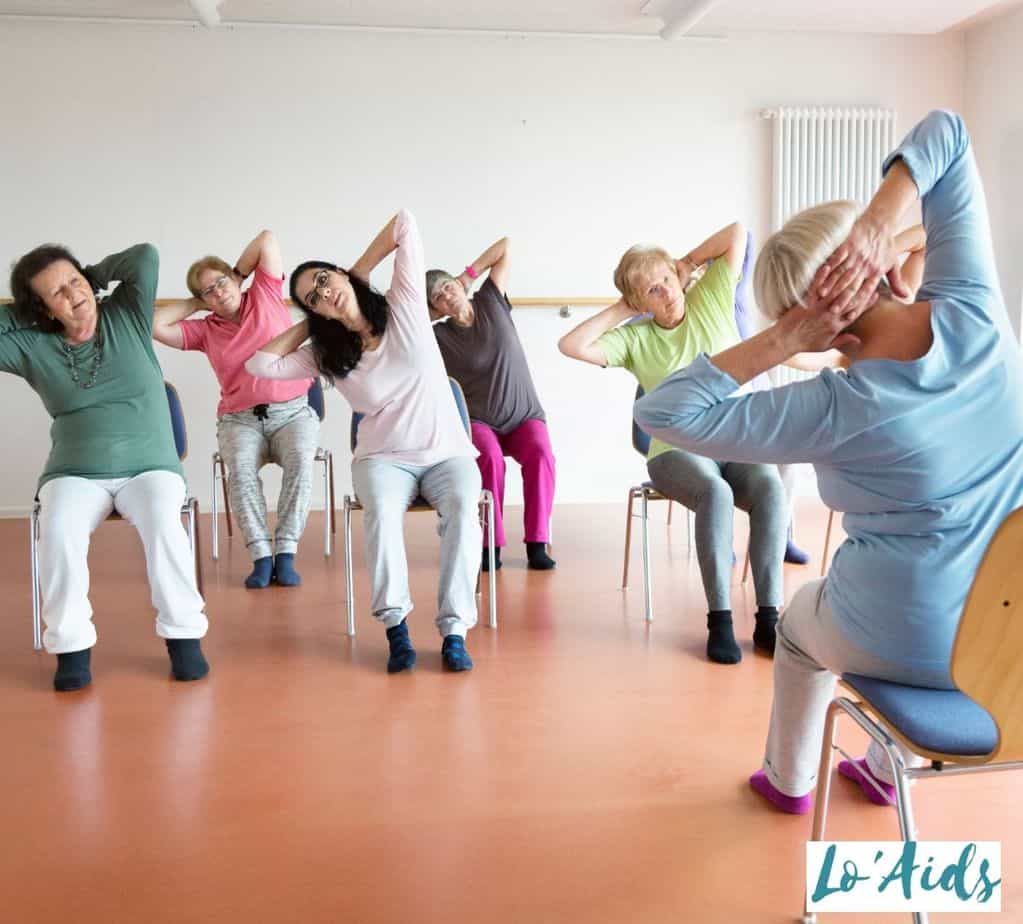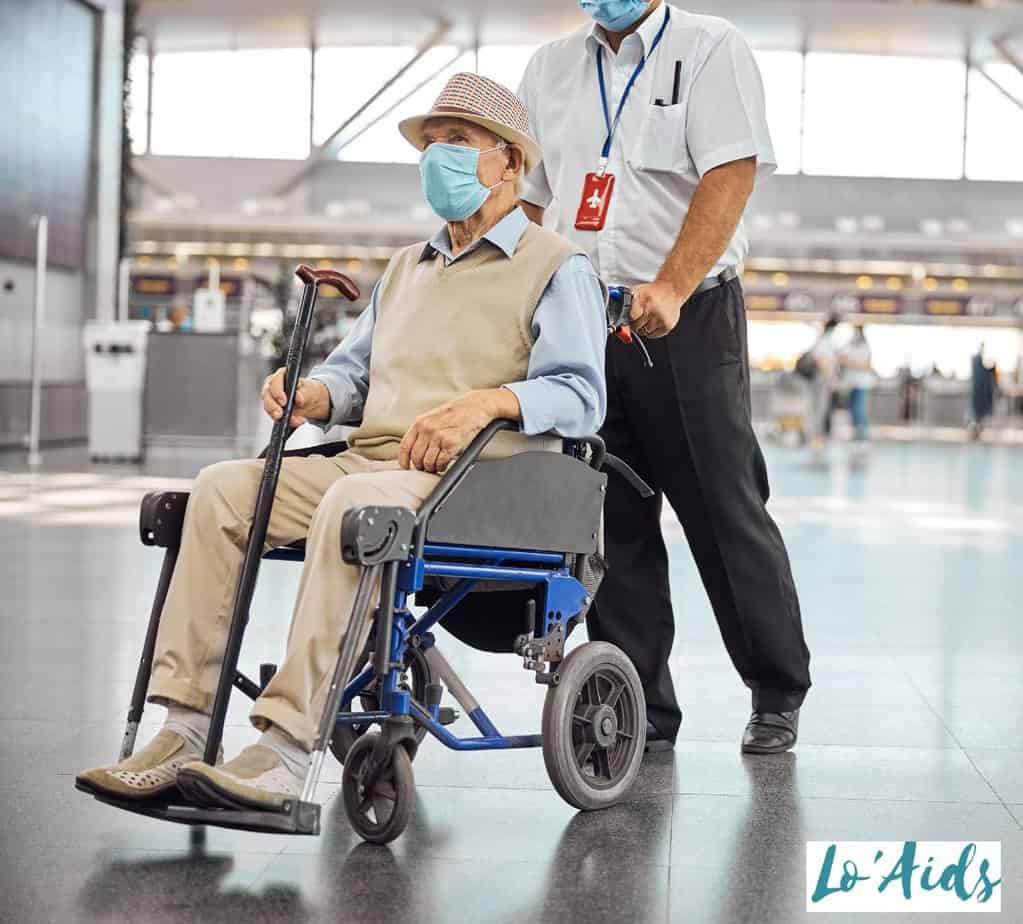Are you on the hunt for the best exercises for wheelchair-bound seniors? Look no further!
As a veteran Doctor specializing in physical rehabilitation, I’ve spent years studying and testing many exercise routines to help my patients as much as I can…
To unravel this Gordian knot, I’ve delved into the most recent research, engaged with top-tier experts, and even sought feedback directly from wheelchair users—all in a bid to discover the exercises that offer the greatest benefits.
Keep scrolling as I’ll reveal my top 10 handpicked selections of the most effective and enjoyable wheelchair exercises for seniors – crafted with love to boost your strength, flexibility, and overall well-being in a New York minute!
CHECK OUT: Best Ergonomic Wheelchair
Table of Contents
Key Takeaways
- Exercise is crucial for wheelchair-bound individuals, and incorporating wheelchair exercises can have significant benefits for seniors with limited mobility.
- Consult with a healthcare provider or physical therapist before starting a new exercise regimen to ensure safety and proper guidance.
- Before starting any new exercise regimen, especially for individuals with specific health issues, it is essential to consult with a healthcare provider or physical therapist to ensure safety and proper guidance.
Are you itching for that long-awaited list of the 10 best wheelchair exercises? Keep scrolling!
6 Best Wheelchair Exercises for Seniors
According to researchers from the Agency for Healthcare Research and Quality (US); 2021
“Although the health benefits of physical activity are well understood for the general population, there is limited knowledge regarding the benefits and potential drawbacks of physical activity for individuals who are dependent upon, partially dependent upon, or at risk for needing a wheelchair” (Skelly et al., 2021).
Thankfully, as a dedicated physical medicine and rehabilitation specialist, I’m revealing my top 10 exceptional exercises – they work like a bomb!
Also Read: How to Lose Belly Fat in a Wheelchair?
1. The Upper Back and Neck Stretch
Let’s focus on the trapezius, deltoids, and levator scapulae when it comes to stretching your muscles.
These guys in your upper back and neck can get tight, especially when you’re spending a lot of time in a wheelchair.
Amazingly, all of these are muscles in the lower back and the back of your neck.
To start, warm up your muscles for an upper-body workout. Remember always to incorporate stretching or wheelchair yoga exercises into your exercise program.
- Sit upright with relaxed shoulders and leave a gap between your back and the chair.
- Next, gently stretch your arms forward at shoulder height and join your fingers.
- While in this position, you then twist your hands until your palms are facing away from your face.
- As your palms face you, stretch your arms forward while rounding your shoulders and back, and keep your head upright.
- Stretch as far as you can and hold this position for 10 to 15 seconds before returning to your initial position.
- Next, you want to put both arms behind you in the open space between your back and the chair. If this is painful, go as far as is comfortable. Remember to stay within a comfortable position where you only feel a gentle stretch.
- Once your palms are pressed together behind you, let your head drop forward to stretch out your spine. You want to make sure while you push your arms down that, you pull back your shoulder to give you that nice stretch on the back of your neck.
- Do these exercises each at least 2-3 times for reps of 5-10
2. Tricep Stretch
The triceps are very important when it comes to pushing a wheelchair, and it is only right that they be exercised. This is another flexibility exercise to ensure the triceps are never tense.
- Sit upright on a chair, relax your shoulders, and leave space between your back and the chair.
- Next, raise your right arm behind your head and touch your left shoulder with your right hand.
- To help assist your grip on your left shoulder, use your left hand to press on your right elbow and deepen the stretch.
- Count up to 10 and then alternate your arms.
READ MORE: How to Play Wheelchair Basketball
3. Seated Dumbbell Workouts
This strength exercise requires lightweight dumbbells and is one of the best shoulder exercises for seniors as it targets upper body strength in your shoulders, triceps, pectorals, and biceps.
In short, these are great for stronger chest muscles.
There are two variations you can use here.
- First, sit upright with your back away from the chair. Depending on your strength, start with light dumbbells. If it feels too easy, increase your reps before going to heavier weights.
Variation One:
- Raise your arms straight away from you at your side until they are at shoulder height. Keep your core tight for the duration of the exercise.
- Curve your elbows up at a 90-degree angle so that you are lifting the weights above your head.
- Holding your 90-degree angle, bring your elbows together before you, stopping just before the weights touch. Hold for a moment and return to the starting position.
- Do at least 15 reps.
Variation Two:
- Sit on a flat chair seat with your feet flat on the ground. Keep space between your knees.
- Let your right hand drop between your knees, holding the weight, while your left has onto your left knee for support.
- Curl the weight up to your chest, hold it, and slowly lower it again.
- Try to do at least fifteen reps on both sides.
TRY READING: Outdoor Electric Wheelchair
4. Seated Hip Abductions
This strength and flexibility exercise targets your lower body muscles, such as the quads, hamstrings, glutes, and thigh muscles.
- For this exercise, you will first need a resistance band to place around both your knees, joining your legs together. However, it should not be too tight.
- Sit straight and make sure your feet are glued to the floor. Your hands should be on the side of your chair, and your head should face forward. Ensure your muscles are not tense.
- Now work against the resistance band to separate your knees as far as possible.
- Try for ten reps in 3 set if this exercise is within your capability.
5. The Seated Chest Press
This is one of the upper body exercises that target the pectoral muscles and help build those upper body muscles while increasing bone density.
- First, tie the resistance band around the back of your chair and let it circle the front of your chest.
- Hold the band with both hands and push it away from your chest until your hands are straight, but without locking the elbows.
- Nest, gently return to your original position.
- Aim for 8-10 reps for sets of 2.
6. Shoulder Retractions
This strength exercise targets mainly the shoulders for stronger muscles in the back.
- Sit upright with your back away from the back of the wheelchair and tighten your core area.
- Bend your arms at a 90-degree angle in front of you while your hands face down.
- Position them similarly as to how you would hold the handles of a motorbike.
- Now stretch your hands forward as far as you can and hold them there for a few seconds.
- Next, push your shoulder blades together as you return to the bike-holding position, and squeeze your back to create tension.
- Aim for three sets of 10 reps.
7. Seated Resistance Band Rows
This exercise strengthens the back and chest muscles while promoting good posture and core strength.
- Sit upright with your feet flat on the ground. Loop a resistance band around your feet and hold the ends in each hand.
- Start with your arms extended and the band taut. Keep your back straight and shoulders down.
Pull the band towards your body, squeezing your shoulder blades together as your elbows pass your sides. - Slowly extend your arms back to the starting position.
- Perform two sets of 10 reps.
8. Medicine Ball Twists
Medicine ball twists are excellent for strengthening the abdominal muscles and increasing the range of motion, contributing to overall daily life activities.
Remember to use a medicine ball weight suitable for your strength level.
- Sit upright in your wheelchair with a medicine ball in your hands.
- Hold the ball at chest level with feet flat on the ground and a slight bend in your knees.
- Turn your torso to the right and left, moving the ball across your body.
- Make sure to keep your back straight and your core engaged.
- Do 2 sets of 10 reps.
9. Bicep Curls with Resistance Bands
This exercise helps improve muscle strength and tone in the upper body, particularly in the arm muscles.
- Position your wheelchair over a resistance band, ensuring it’s secure under the wheels.
- Grasp the ends of the band in each hand with your palms facing up.
- With elbows at a 90-degree angle and tucked in close to your sides, curl your hands towards your shoulders.
- Slowly return to the starting position.
- Aim for two sets of 10 reps.
Before you peek ahead, check out this video on some clever moves!
10. Seated Leg Extensions
Although designed for wheelchair users, this exercise also benefits the lower body, particularly for those who can exert some control over their leg muscles.
- Begin by sitting upright in your wheelchair, hands on the armrests.
- Extend one leg in front of you as far as possible, keeping your foot flexed.
- Hold this position for a few seconds, then slowly lower your leg.
- Alternate legs for 1 set. Aim for two sets of 10 reps.
Before you go full throttle into this exercise routine, remember to have a chat with your healthcare provider.
Remember: always consult with your health care provider before beginning any new exercise regimen, especially for those with specific health issues, including spinal cord injuries.
And there you have it – wheelchair exercises that are as effective as they come, scientifically backed, tried, and tested in rehabilitation settings.
Pro Tip: Want an evidence-based tool for your training? Get yourself a back brace and work out the right way!
Benefits of Physical Exercise for Seniors
According to a study published in the African Journal of Disability in 2017 by Terry J. Ellapen and his colleagues, “the primary form of physical activity for wheelchair users comes from upper limb exercises. [4]”

These exercises improve their cardiometabolic risk profiles and can lead to overuse injuries in the upper limbs due to poor wheelchair propulsion, incorrect chair setup, and poor cardiorespiratory fitness [3].
Here are some stellar benefits:
#1 Joints and Bone Health
Wheelchair exercises loosen joints and boost bone density, reducing injury risks.
Seated exercises and light resistance band workouts are notably effective, helping combat conditions like osteoporosis.
#2 Muscle Strength and Flexibility
A variety of exercises like resistance training and stretching exercises enhance arm and core muscle strength and flexibility.
They aid in maintaining muscle tone and preventing muscle atrophy. Gradual progression from lighter to heavier weights optimizes muscle health.
#3 Stress and Anxiety Relief
Regular exercise alleviates stress and anxiety, fostering a positive life outlook.
Cardiovascular exercises and structured exercise regimens significantly bolster mental health.
#4 Body Composition
Exercise reduces body fat, increases lean muscle mass, and improves body composition. Exercise machines specifically designed for wheelchair users help achieve these goals.
#5 Cardiovascular Health
Regular physical exercise lowers blood pressure and cholesterol levels, reducing the risk of heart disease. Cardiovascular and leg movements are particularly beneficial for heart health.
Remember that individual health issues should be considered, and consulting a healthcare provider is recommended before initiating new exercise programs.
To avoid strain, comfortable exercise positions should be maintained. Suitable exercise routines can offer immense health benefits to wheelchair users.
Safety Tips
Ensuring safety during your exercise routine is essential, especially for wheelchair users. Follow these expert-recommended tips to stay safe while staying active:

- Seek Professional Guidance: “When and if possible, wheelchair users should stand or shift positions as often as possible to alleviate pressure in one area,” advises Stanford Ho, MD at Arizona State University [5].
- Gradual Progression: Start slowly and gradually increase the intensity and duration of your exercises over time. This allows your body to adapt and minimizes the risk of overexertion or overuse injuries.
- Proper Form and Technique: “Maintaining proper form and technique during each exercise is crucial to reduce the risk of injury,” emphasizes David G. Armstrong, founder of the Southern Arizona Limb Salvage Alliance [5].
- Listen to Your Body: Pay attention to any pain or discomfort during exercise. If you experience persistent pain, consult with a healthcare professional.
- Breathing Control: Practice controlled breathing during your workouts to help maintain focus and ensure adequate oxygen supply.
- Stable Foot Position: Keep your feet firmly planted on the ground or wheelchair footrests for stability and to prevent imbalance or falls.
Remember, safety should always come first when engaging in physical activities. Following these expert tips, you can enjoy a safe and rewarding exercise routine.
READ MORE
Exercise for Seniors in Wheelchairs FAQs
What are the best chair exercises?
Some of the best chair exercises can target specific upper body muscles, such as the triceps, chest, and biceps.
These exercises are characterized by simple movements which do not strain the muscles, and examples of them are the bicep curl, the chest press, or shoulder retractions
How can I strengthen my legs in a wheelchair?
Regular movement and daily lower body exercises can gradually increase the strength of the legs of seniors in wheelchairs.
Incorporating lower body exercises such as the chair pigeon pose can help with the gradual increase of flexibility of your legs. Using resistance bands for seated hip abductions can improve your thigh muscles.
How to exercise with limited mobility?
With basic chair exercises, you are not required to move your body. Instead, you can target isolated parts that you can move from the safety of your chair.
You can also tailor the exercise to meet your current capabilities.
The trick here is to regularly exercise the working muscles and gain strength in them so that other body parts can be gradually incorporated into the routine for maximum benefit.
Conclusion
As you’ve learned, exercises for wheelchair-bound seniors – gentle yoga, shoulder retractments, elastic band stretches – provide an admirable lifestyle addition vital for health…
You’ve seen how chair exercises can help seniors enhance their flexibility, endurance, and strength.
Knowing this, jumping into a new exercise routine can be dangerous, so be sure to consult a physical therapist first.
Integrating these wheelchair exercises, which are medically approved and recommended, into your regular exercise routine has numerous benefits – from promoting heart health, maintaining muscle strength, and enhancing flexibility to contributing to a better quality of life.
However, please always consult your healthcare provider before beginning any new exercise regimen, especially if you have specific health issues, such as spinal cord injuries.
I often remind my patients that the journey toward better fitness is a marathon, not a sprint.
However, once physical exercise becomes part of your daily routine, it becomes a crucial building block in creating a happy life.
And don’t just take my word for it – I dig into the likes of Google Scholar and PubMed regularly to stay on top of the latest scientific studies. I’m a firm believer in the power of evidence-based practice.

What wheelchair exercises for seniors have you tried? Please share with us your experience below!
References
- 1. Selph SS, Skelly AC, Wasson N, Dettori JR, Brodt ED, Ensrud E, et al. Physical Activity and the Health of Wheelchair Users: A Systematic Review in Multiple Sclerosis, Cerebral Palsy, and Spinal Cord Injury [Internet]. PubMed. Rockville (MD): Agency for Healthcare Research and Quality (US); 2021 [cited 2023 May 18]. Available from: https://www.ncbi.nlm.nih.gov/books/NBK574873/
- 2. Seguin RA, Epping JN, M Ed David, Buchner M, H Rina Bloch, Miriam E, et al. STRENGTH TRAINING FOR OLDER ADULTS [Internet]. 2003. Available from: https://www.cdc.gov/physicalactivity/downloads/growing_stronger.pdf
- 3. [email protected]. 5 Benefits of Exercise for Wheelchair Users | National Ramp [Internet]. National Ramp: Home Access. 2019 [cited 2023 May 18]. Available from: https://homeaccess.nationalramp.com/5-benefits-of-exercise-for-wheelchair-users/#:~:text=For%20seniors%20who%20have%20decreased
- 4. Ellapen TJ, Hammill HV, Swanepoel M, Strydom GL. The health benefits and constraints of exercise therapy for wheelchair users: A clinical commentary. African Journal of Disability [Internet]. 2017;6. Available from: https://www.ncbi.nlm.nih.gov/pmc/articles/PMC5594262/
- 5. You are being redirected… [Internet]. www.vantagemobility.com. [cited 2023 May 18]. Available from: https://www.vantagemobility.com/blog/mens-health-week-wheelchair-users





My husband’s dad is is a wheelchair. I should have him try these exercises.
These look like great and easy exercises for seniors with limited mobility!
These are great exercises for seniors but they can also be done by someone with health issues like myself. I have fibromyalgia and rheumatoid arthritis. I like that these exercises can be done from a chair.
We need to stay always active. And these exercises will help a lot!
Great list of exercises. I think those are easy enough for them to do.
Thank you for this informative rive. I may need one of these for my mom soon and loving some of the models mentioned….
Thank you for this informative post. I may need one of these for my mom soon and loving some of the models mentioned….